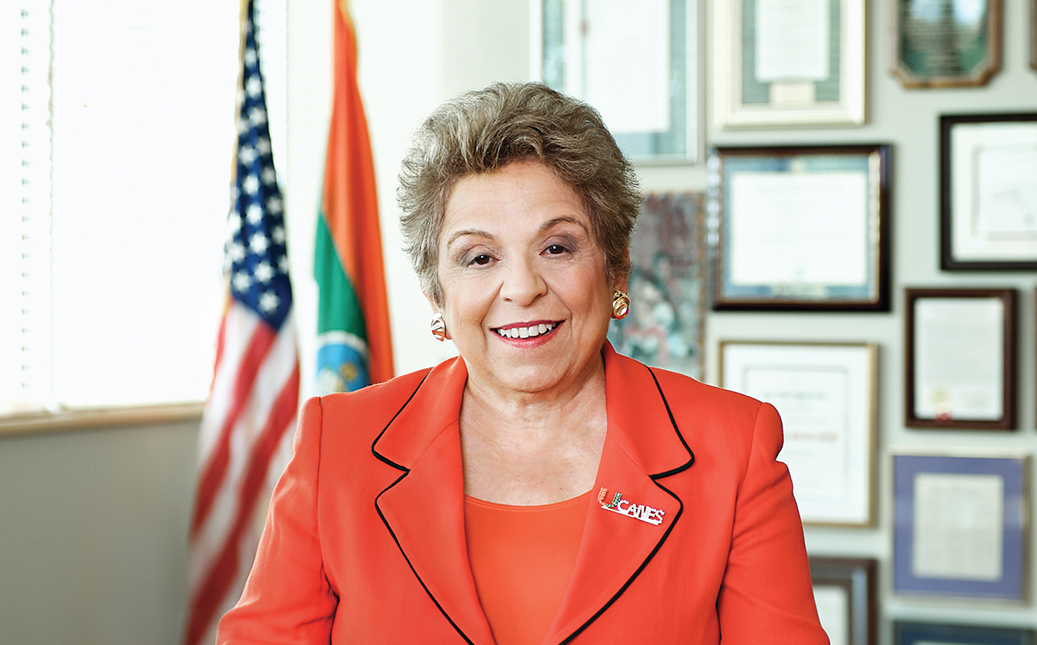With President Donna E. Shalala’s last semester underway, the search for her replacement raises many questions in the minds of students: What exactly does a college president do? Who’s next? Will the president sack Al Golden, get rid of Chartwells and give me automatic A’s?
Fortunately for the curious, I’ve done some research to guide those left in the dark about who our next leader will be. And because it’s almost March Madness, I’m giving my thoughts in odds.
First, a caveat.
These are completely spit-balled projections and should be treated as such. The real search is secret, because any strong and employed candidate obviously can’t openly say they’re considering leaving to become president of UM.
Second, the role of the new president.
In brief, the president will be responsible for raising lots of money and hiring qualified people for research and medicine. Everything else, including athletics and undergraduate student life, will follow from that.
That said, here are my odds and thoughts on each.
Some provost or dean you’ve never heard of, 1:1. Shalala’s fresh out of President Clinton’s administration was a high-profile choice.
Most similar college presidents at nonprofit research universities are not.
Academic administrators understand how to navigate bureaucracy, usually with the essential bonus of teaching experience. Shalala herself was chancellor at Wisconsin-Madison in the 1990s.
Pascal Goldschmidt, dean of Miller School of Medicine, 1:10. Head of the Miller School of Medicine? Check. Understands STEM research? Check. Young age, but great touch-of-gray hair? Check and check.
Goldschmidt’s main likely drawback: a faculty protest against profit-driven actions at Miller in 2012-13, might actually be a bonus in a gig focused on money-raising.
Roni Avissar, dean of RSMAS, 1:20. Like Dean Goldschmidt, Dean Avissar is a media-friendly, young STEM-focused administrator from within the university.
Like Goldschmidt, Avissar has an international background, which is good for a globally ambitious school. RSMAS isn’t on the bureaucratic scale of UHealth, so Goldschmidt gets the edge in the odds.
Steven Chu, former secretary of Energy, 1:40. Chu, a Nobel Laureate in Physics and former director of the Lawrence Berkeley National Lab, just left the Obama Cabinet.
While there, he was focused on carbon reduction strategies, a nice fit within the university’s research.
Plus, UM did well the last time we picked a cabinet official, right?
Alan Krueger, Princeton labor economist, 1:75. Krueger just finished a stint as chair of the White House Council of Economic Advisers and is one of the top 50-cited economists in the world.
He doesn’t have the administrative experience, which is likely his biggest drawback. However, after Chu, Krueger is one of the top big policymakers who might be open to an offer.
Daniel Barry, MD ’82, former astronaut, 1:100. Balanced academic background in biotech and robotic engineering, and an alumnus to boot. Plus, he was in space.
His post-NASA career includes a stint on the show “Survivor” and administrative experience at the start-up school Singularity University.
Those both may be too far out in left field for UM’s tastes.
Gloria Estefan, BA ’79, Singer, 1:1000. Ms. Estefan has experience in the university’s board of trustees.
And while a student here, she was almost recruited to spy for the CIA, which was cool.
Dwayne ‘The Rock’ Johnson, BGS ’95, professionally strong person. 1:1,000,000.
My personal vote.
Patrick Quinlan is a junior majoring in international studies and political science.







